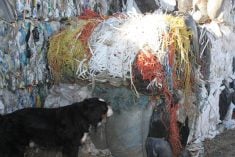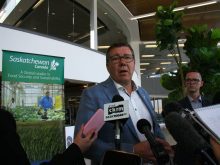Drew Lerner hasn’t budged on his first fall frost forecast.
“I’m still focused on the first week in September to be the next threat period,” said the president of World Weather Inc.
This year’s forecast comes with more than the usual share of caveats because there is no dominating pattern for where a ridge of high pressure will set up.
“The dominating pattern right now is actually one of just constant variation, which is a pattern in itself but it doesn’t offer any help,” said Lerner.
Read Also

Alberta looks for agricultural plastic management input
Alberta provincial government giving agriculture industry a say through survey in shaping future plastics management
If there is any bias in the atmosphere, it is for “more ridginess” to occur in the eastern part of the United States, which means Alberta and western Saskatchewan would likely be the coolest spots on the Prairies.
In lieu of finding a high pressure ridge pattern, Lerner has been forced to rely on analyzing atmospheric rhythms to make his prediction. Those rhythms indicate the next cold snap on the Canadian Prairies will occur during the first week of September.
He can’t say with any certainty whether that system will deliver the first fall frost but if it is anything like last week’s cool weather, it could.
Temperatures dipped as low as 1 C in southern Manitoba last week.
Dean Erickson, a farmer from Birsay, Sask., said a frost during the first week of September would be an epic disaster.
“It will devastate Saskatchewan as a province,” he said.
Erickson is usually done seeding on his farm by May 25. This year, his seeder was running until June 18 and he was still left with 800 unplanted acres.
The lentil crop in western Saskatchewan is four weeks behind normal development.
Farmers in his area are usually combining the crop by Aug. 10. Many of them won’t be desiccating their lentils until Sept. 1.
An early season frost would be the nail in the coffin for a lentil crop that is already struggling with disease.
“Even a 10th of September (frost) is going to be a holy mess for Saskatchewan farmers,” he said.















